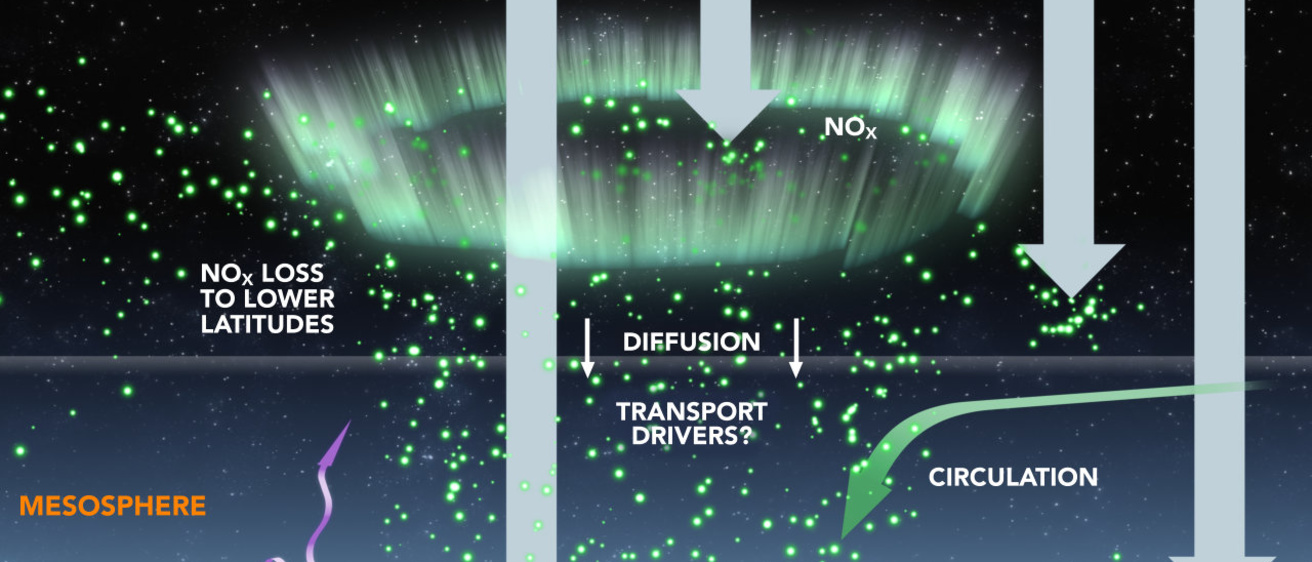The National Science Foundation has awarded Associate Professor Allison Jaynes and Associate Research Scientist/Engineer Kristine Sigsbee a $586,504 grant to study how charged particles from space affect the Earth’s atmosphere and climate.
Energetic precipitation that rains down on the atmosphere from space is known to cause a whole host of space weather effects, including damage to low-Earth orbiting spacecraft, location signal disruptions, and danger to trans-polar aircraft and passengers. Additionally, the atmospheric effects of nitric oxides from particle precipitation play a role in our understanding of weather and climate - a topic that is particularly relevant right now.
The linkage between space and climate is not well-known. The study “GEM: Quantifying radiation belt losses and their effects on the atmosphere” aims to investigate this link directly by analyzing data from spacecraft, ground-based instrumentation, and using atmospheric modeling to uncover the cause and effect of particle precipitation on the atmosphere and climate.
Jaynes and Sigsbee will train and involve graduate students in the study, and offer a short, virtual seminar series that will illuminate this science topic, highlight the interdisciplinary nature of the work, and discuss new findings.
Energetic particle precipitation (EPP) is both a cause and a consequence of many different processes throughout geospace. It is the result of loss mechanisms that occur throughout the inner magnetosphere, contributing to the global dynamics of the trapped radiation belt and ring current particle populations. It is also the cause of several effects on the Earth's upper and middle atmosphere, as the energy deposited in these regions creates changes in chemical constituents. As such, EPP is a process that crosses the traditionally defined boundaries between space science and earth science, and has wide-ranging implications on both systems.
The research project aims to advance the frontiers of our knowledge on the drivers and effects of EPP on the coupled magnetosphere-atmosphere system. In summary, this project will quantify the loss that occurs in the magnetospheric particle population through ground- and space-based observations and use that information to assess the effects of that precipitation on the Earth's atmosphere using whole atmosphere modeling. This approach will allow us to advance our understanding of this process within the context of the space science and atmospheric science fields.

